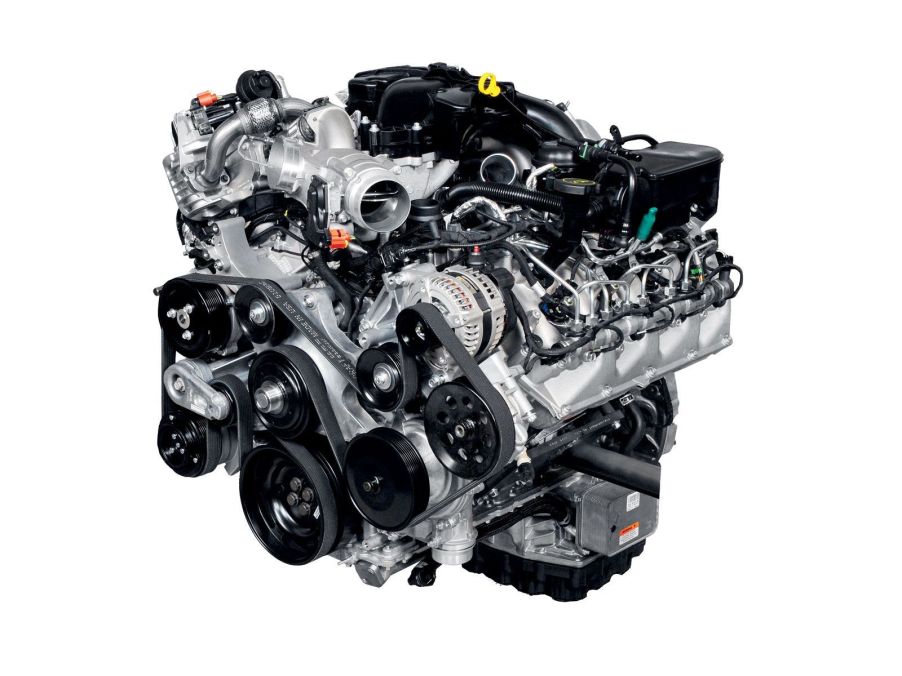
Common PowerStroke Problems: Should You Buy a Ford Diesel?
Ford PowerStroke diesel engines are known for their reliability and their toughness. They’re the go-to choice for Super Duty dominance. Into its third generation, it has seen continual improvements. But, there are known problems you should be on the lookout for if you’re interested in buying a new or used Ford PowerStroke diesel-equipped truck.
When did Ford introduce the 6.7 PowerStroke engine?

The 6.7-liter PowerStroke turbodiesel V8 came to life in 2011. It has a reputation of being the least reliable of the three generations of engines. If your pocketbook will allow, you should consider one of the newer generations, though we’ll get into problems with those, too.
The second-generation PowerStroke 6.7-liter was introduced in 2015. It received many improvements from the first-gen as Ford worked the kinks out of its operation. While most of the improvements were meant to improve reliability, some also helped in the horsepower and torque categories.
The current 6.7-liter PowerStroke diesel came out in 2020. It has proven to be the most reliable as Ford revises each edition. But all of the PowerStroke engines share certain common problems.
EGT sensor failure

This sensor communicates the engine’s exhaust gas temperature. Four can be found, which multiplies the potential for failures, and EGT failures are fairly common. Originally, Ford extended warranty coverage for the sensors. The middle two sensors have the most incidents of failure. But if you have an extended warranty, they should be covered.
Common indications of EGT sensor failure are a Check Engine light, “DTC” fault codes flashing, or a failed emissions test. Some trucks may go into limp mode if one of these sensors fails. But most trucks have had PCM updates which instead trigger the Check Engine light.
The good news is that the sensors are easy to access and replace. And they normally run between $35 and $50 each. Once you determine which sensor is bad, they can be found along the exhaust manifold. Just make sure the engine has cooled off before attempting a DIY fix.
EGR cooler clogs

This is another common PowerStroke problem. The EGR cooler does just that, it cools the EGR flow from the exhaust to the valve. It monitors the flow of the exhaust, and when the valve opens it begins to cool. But carbon deposits collect on the cooler core, causing it to clog. More good news: these are also easy to replace.
You’ll know the EGR cooler is clogged if the Check Engine light is on, or if you get a DTC code. Also, rough idle, generally poor performance, stalling, or you can smell fuel. Engine overheating can also be a symptom. Some will opt to delete the system, but this can create problems with emissions tests. It is also illegal.
Your best bet is to learn how to replace it. EGR sensors usually run around $100, so it isn’t a bank breaker.
6.7 diesel injection pump failure

Ford uses the Bosch CP4 pump. It is known to have metal-to-metal contact inside of the pump. The problem is that the lost metal bits racing through the diesel fuel system can eat up other components. It can affect some, or sometimes all of the fuel system, which can get extremely costly. Luckily, the third-gen PowerStroke uses a different pump.
If your diesel fuel system is beginning to fail, you may notice stalling, it takes longer to start the engine, rough idle, and/or lack of power. All of this is related to fuel flow is inhibited. But it may not materialize because sometimes the pump flat-out fails.
Now, for some really bad news. If the pump does die, it could run as much as over $10,000 to repair the problem. Or problems. Especially if other components have been damaged by metal particles, expect at least a $10,000 Ford service repair bill. Prices can go from $400 and up just for the pump.
Radiator coolant leaks

The PowerStroke actually uses two radiators. It is the primary radiator that has been known to have leaks. This is easy to detect, and if you’re into DIY it is daily easy to remove the radiator and have it fixed. OEM replacements run around $400, but you might consider upgrading to an aftermarket unit.
6.7 diesel turbocharger problems

Turbo bearings in any engine go through Hell, and they’re the most vulnerable to failure. This was especially true for the first-generation 6.7-liter. Most suspect that Ford used too small of a turbo, according to Diesel IQ.
You’ll notice excessive smoke, oil loss, oil in the exhaust, the turbo is unable to reach full boost, power loss, and loud sounds coming from the unit. If one fails catastrophically, you’ll know it. And you’ll have an oily mess to clean up. To replace it, expect to spend more than $2,000.



